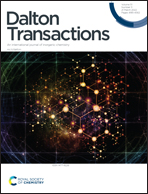Insight into natural medium remediation through ecotoxicity correlation with clay catalyst selectivity in organic molecule ozonation†
Abstract
The oxidative degradation of diazinon (DAZ) and diclofenac sodium (DCF) in aqueous media was comparatively investigated and correlated with the mortality of Artemia salina in the presence of clay catalysts. For this purpose, montmorillonites (Mt) exchanged with Na+ and Fe2+ cations (NaMt and Fe(II)Mt), acid activated bentonites and hydrotalcite were used as clay catalysts. Surface interaction and adsorption on the clay surface were found to govern the catalyst dispersion in aqueous media and both activity and selectivity in ozonation. These catalysts’ features were correlated with the ecotoxicity of ozonised reaction mixtures as expressed in terms of mortality rates of Artemia salina. DAZ and DCF display specific intrinsic ecotoxicity that evolves differently during ozonation according to the catalyst. The ecotoxicity was found to strongly depend on the distribution of the ozonation intermediates, which, in turn, was narrowly correlated with the acid–base properties of the catalyst surface. These valuable findings allow the prediction of the behaviour of the clay-containing media in natural remediation.



 Please wait while we load your content...
Please wait while we load your content...